Find charge on each capacitor and potential difference across each capacitor .

Ceq=2×3(2+3)=1.2μF
Q=CeqV=1.2×100=120μC
V1=QC1=1202=60 volt.
V2=QC2=1203=40 Volt
Similar Questions
In figure C1=C5=8.4μF and C2=C3=C4=4.2μF.The applied potential is Vab=220V
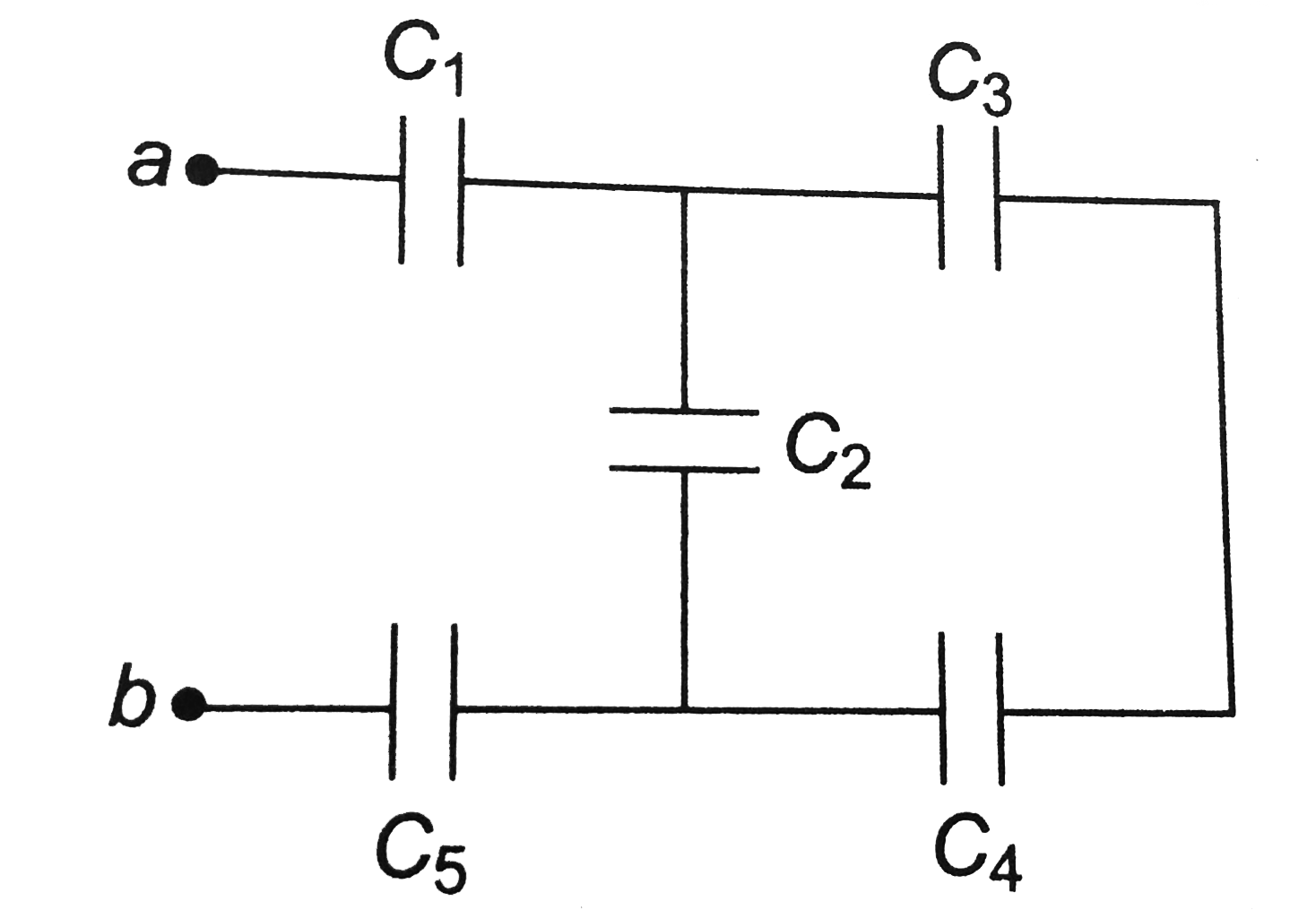
(a) What is the equivalent capacitance of the network between points a and b?
(b) Calculate the charge on each capacitor and the potential difference across each capacitor.
View SolutionIn the circuit shown in figure find
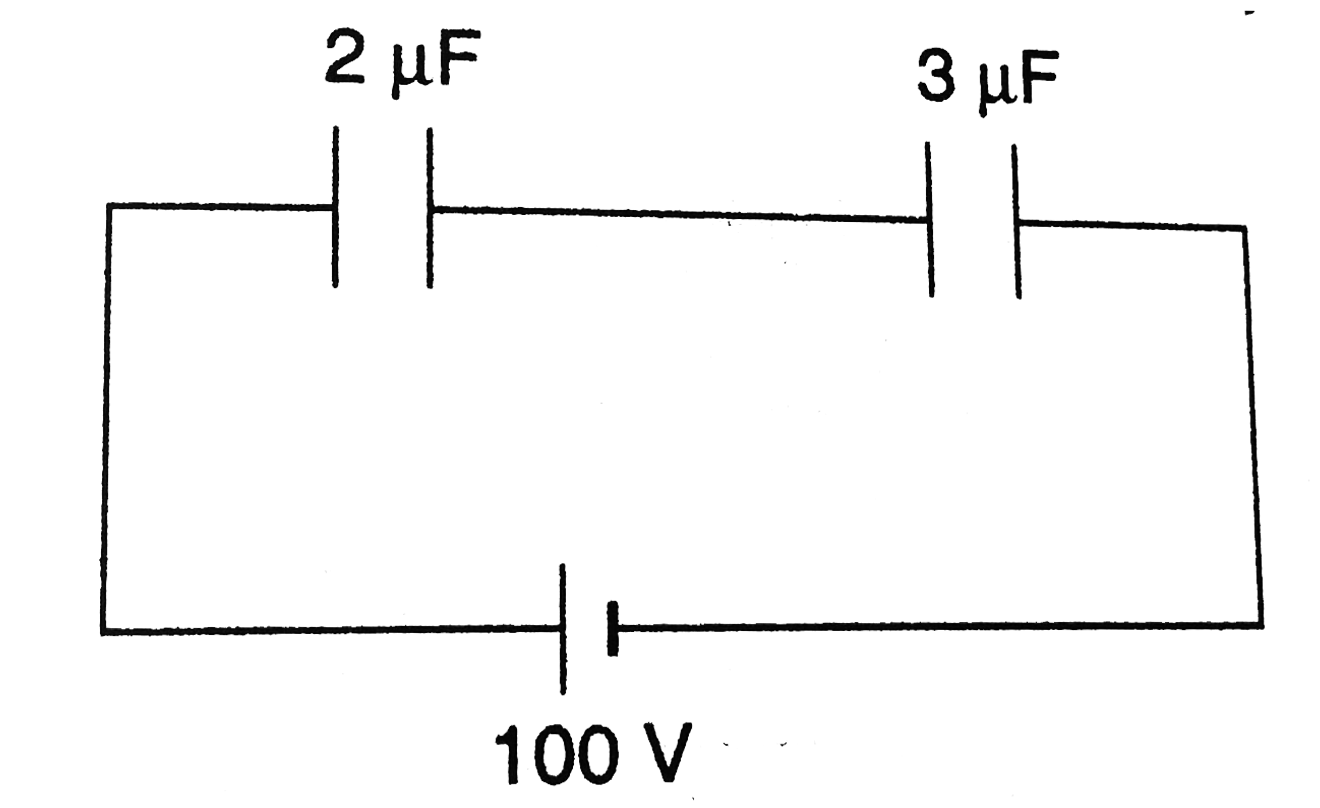
a. the equivalent capacitance
b. the charge stored in each capacitor and
c. the potential difference across each capacitor.
View SolutionCalculate the charge on each capacitor and the potential difference across it in the circuits shown in figure for the cases :
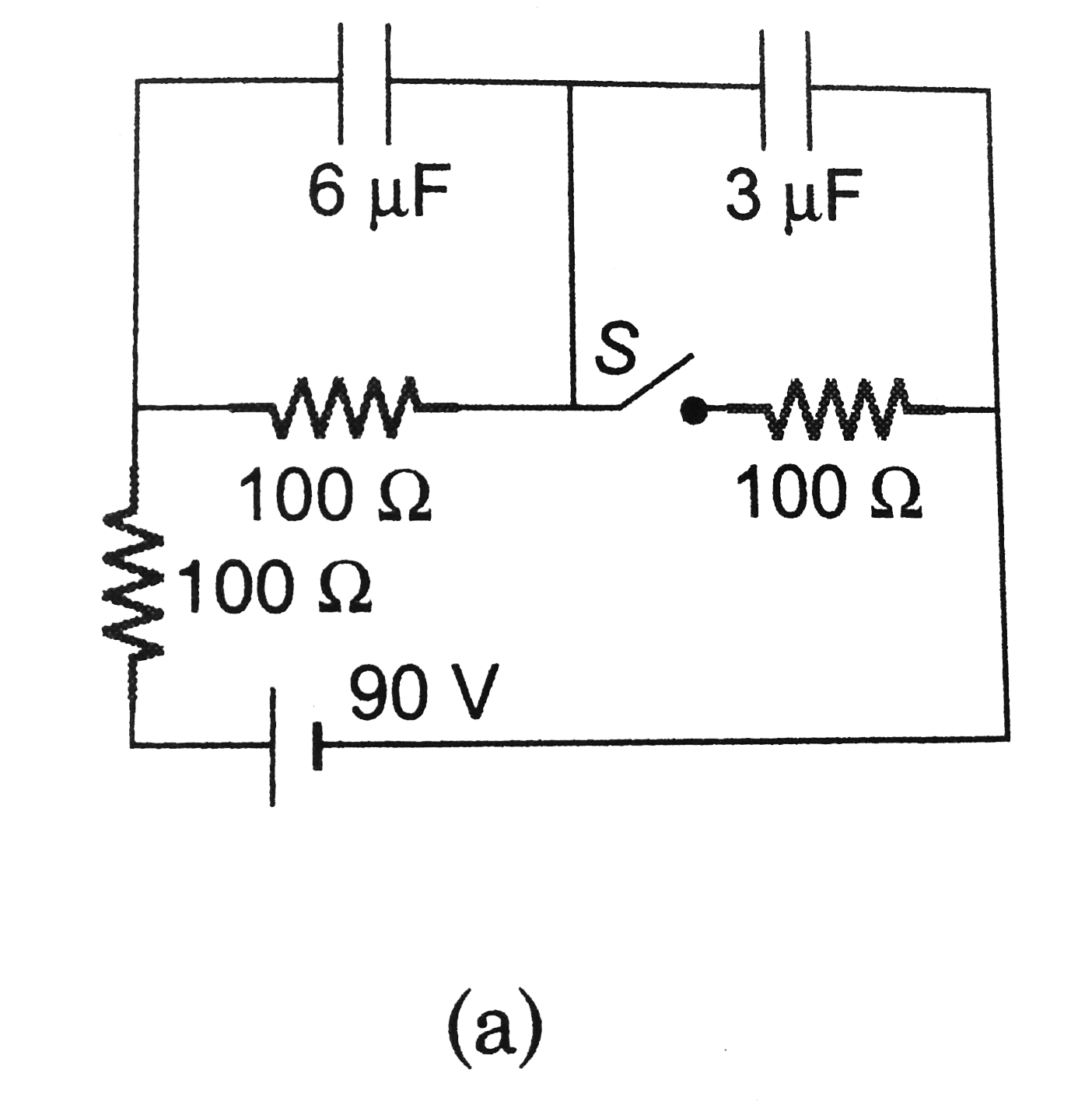
(i) switch S is closed and
(ii) switch S is open.
(iii) In. figure (b), what is the potential of point A when S is open?
View SolutionFind the potential difference and charge on each capacitor.
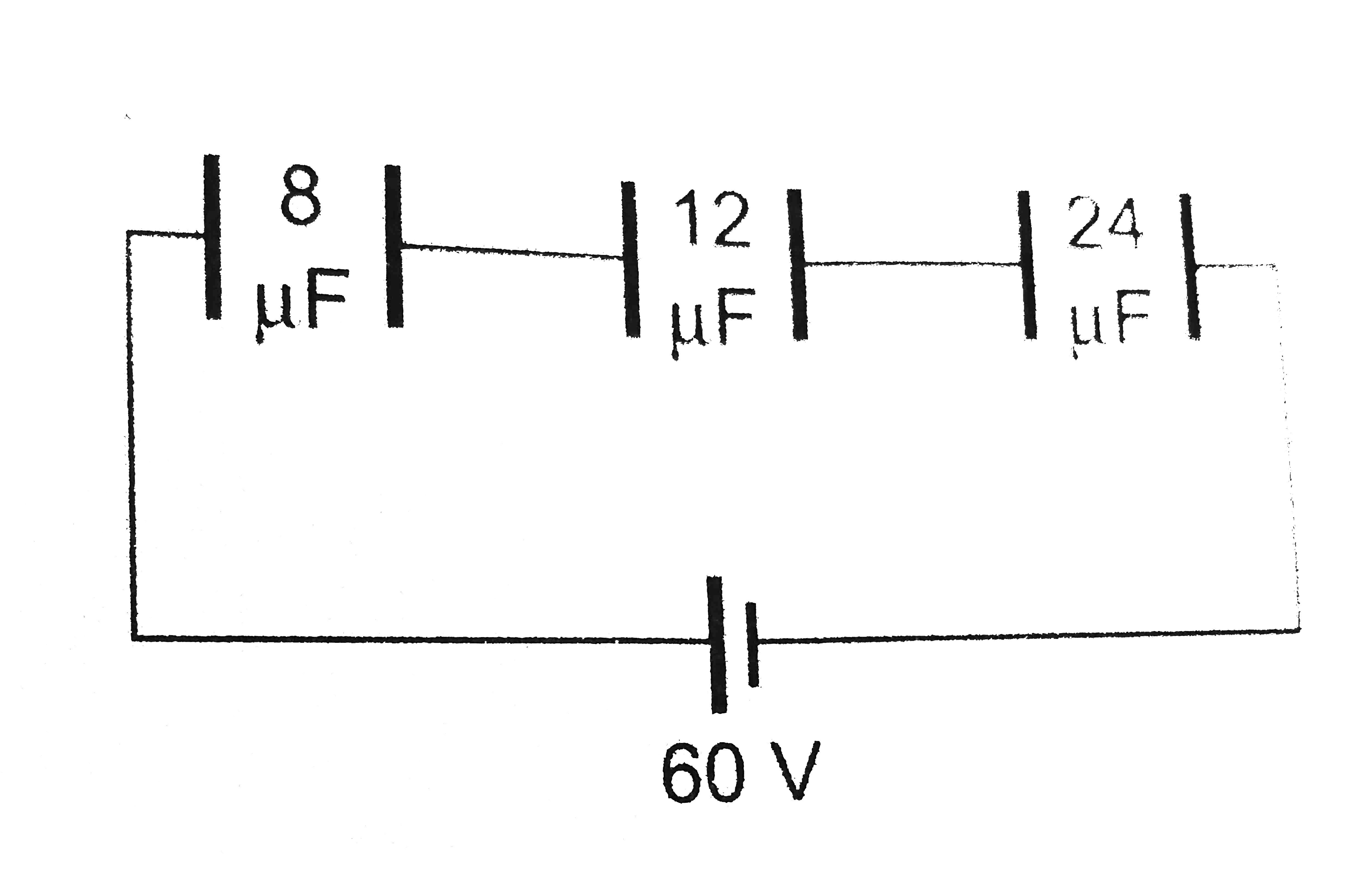
View SolutionA 12 pF capacitor is connected to a 50 V battery. How much electrostatic energy is stored in the capacitor ? If another capacitor of 6 pF is connected across the combination, find the charge stored and potential difference across each capacitor.
View SolutionA capacitor of capacitance 10μF is charged to a potential 50V with a battery. The battery is now disconnected and an additional charge 200μC is given to the positive plate of the capacitor. The potential difference across the capacitor will be.
View SolutionA capacitor in an LC oscillation has a maximum potential difference of 1.5 and a maximum energy 360μJ. At a certain instant the energy in the capacitor is 40μJ, the potential difference across the capacitor is V volt?
View SolutionFind potential differece across the capacitor (obviously in steady state)
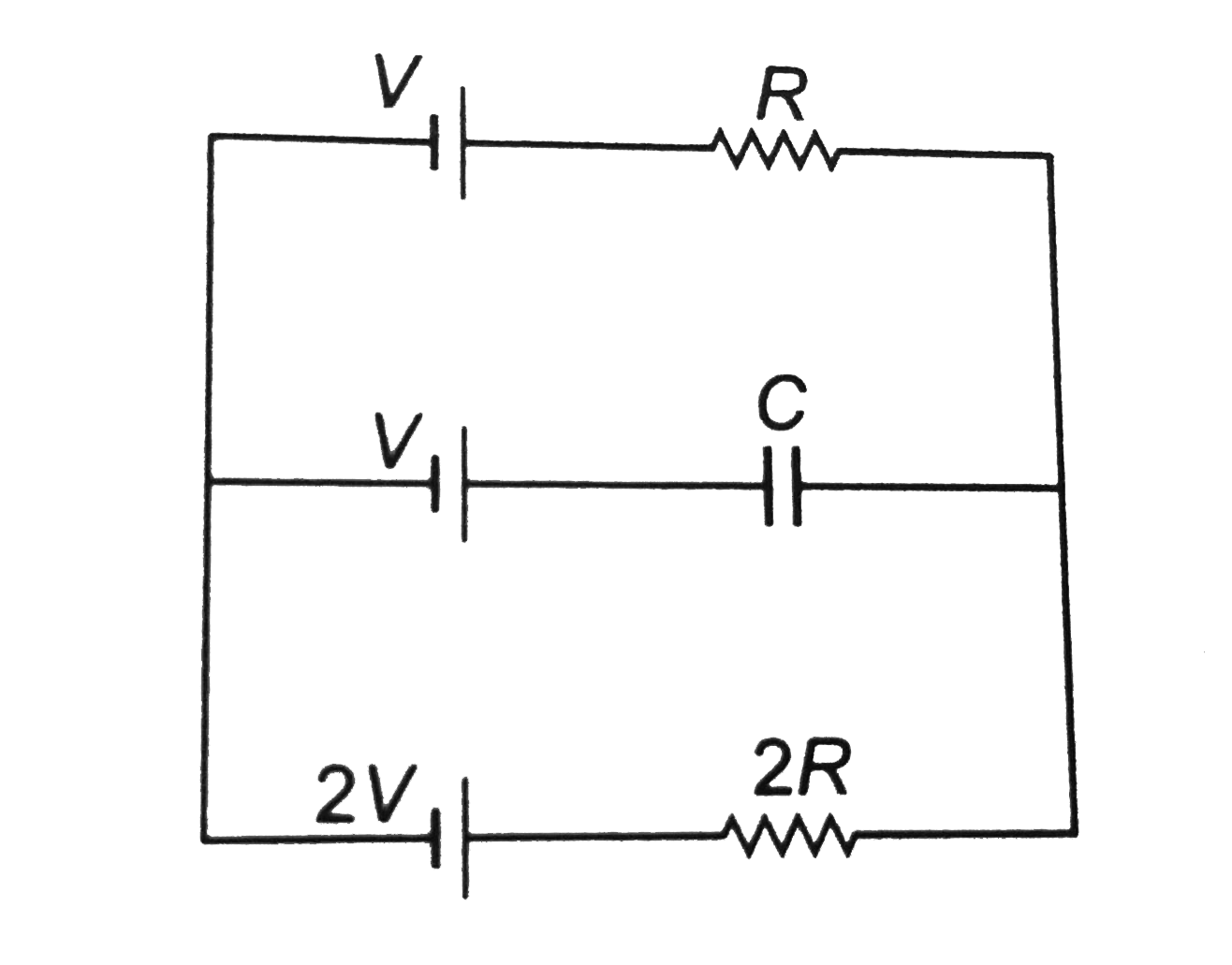
View SolutionIf A is connerted with D and B is connected with C find the potential difference a across each capacitor and the final charge in each capacitor.
View SolutionA capacitor is charged by a cell of emf E the charging battery is then removed. If an identical capacitor is now inserted in the circuit in parallel with the previous capacitor, the potential difference across the new capacitor is
View Solution
